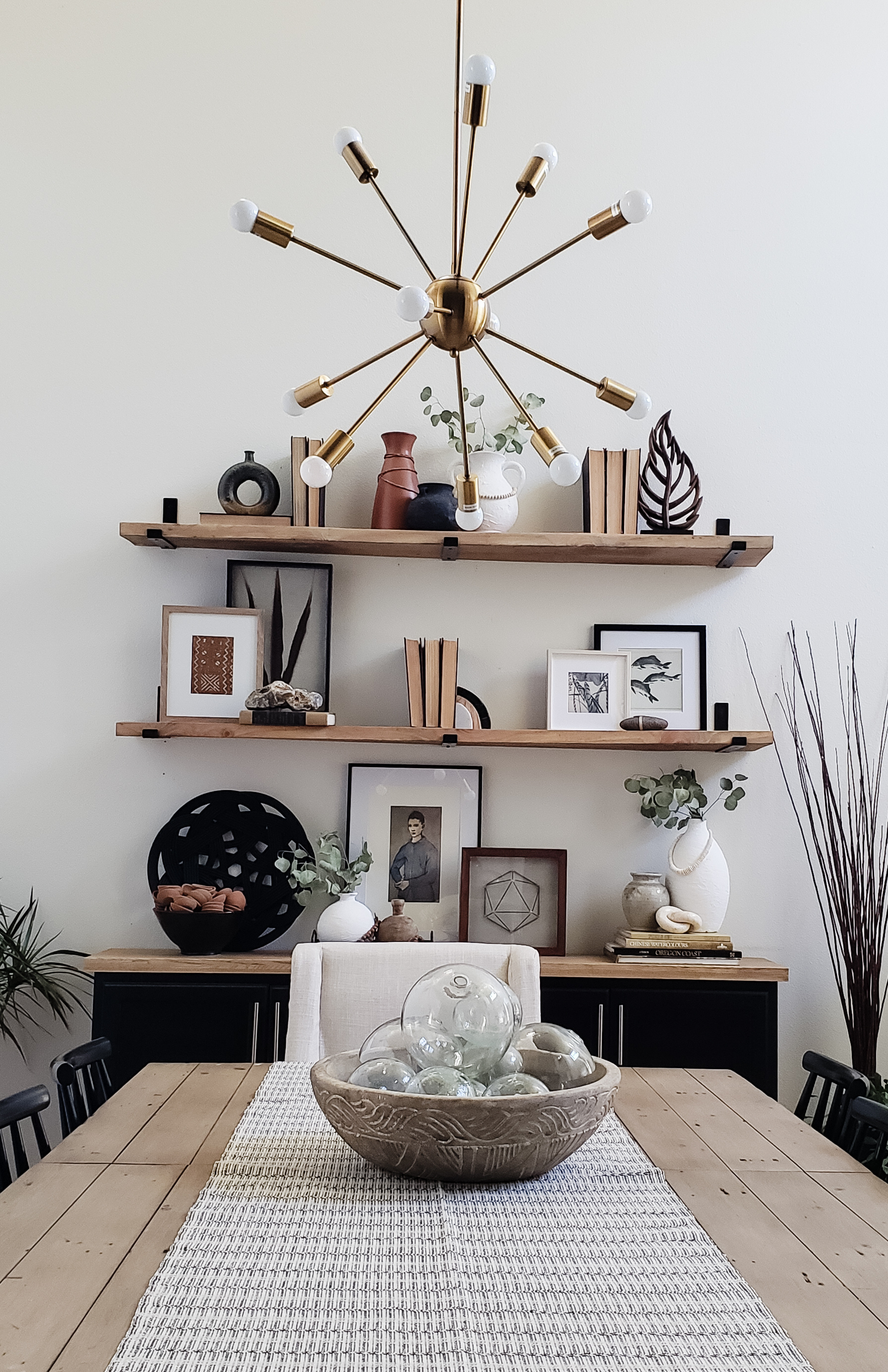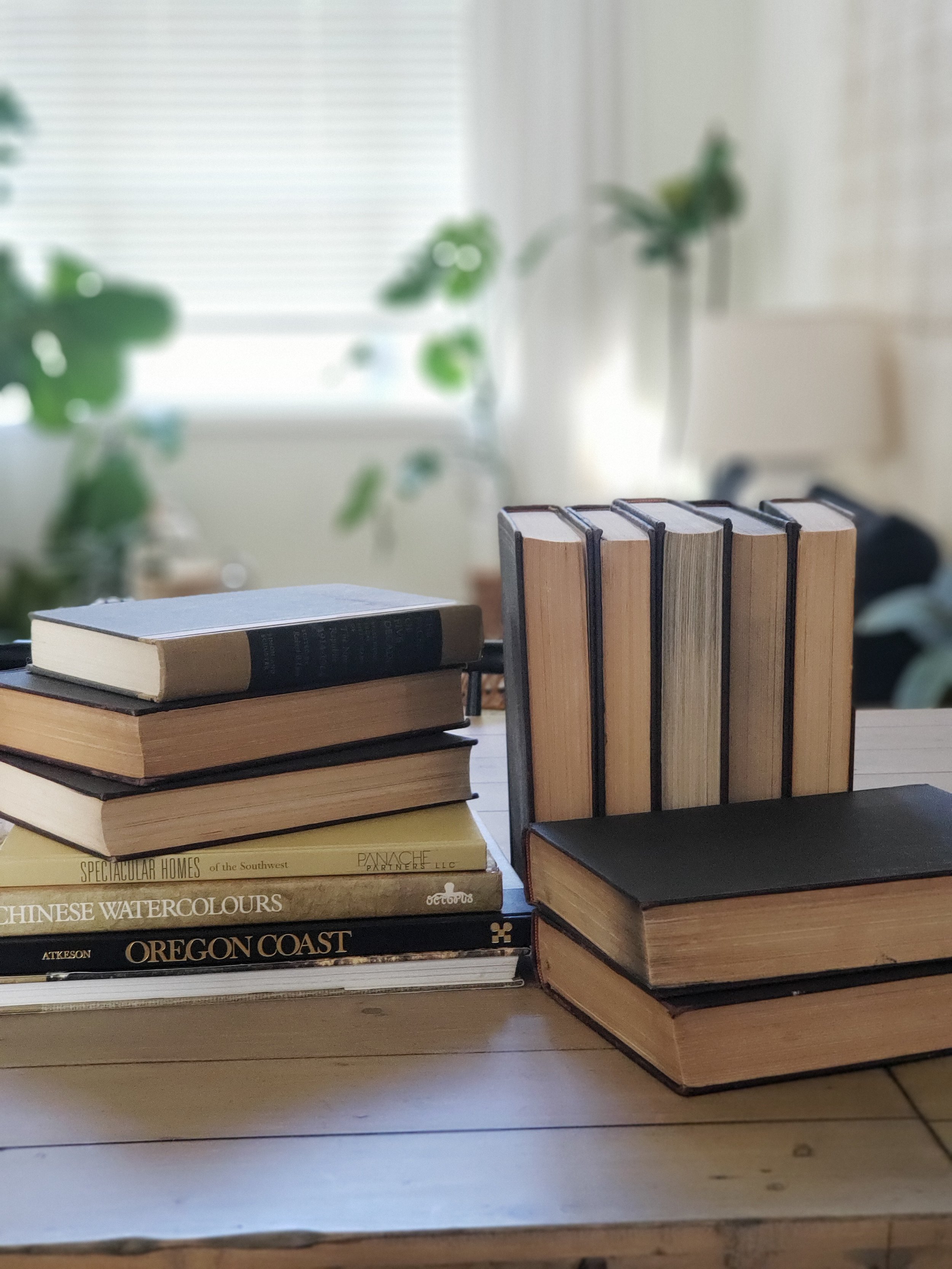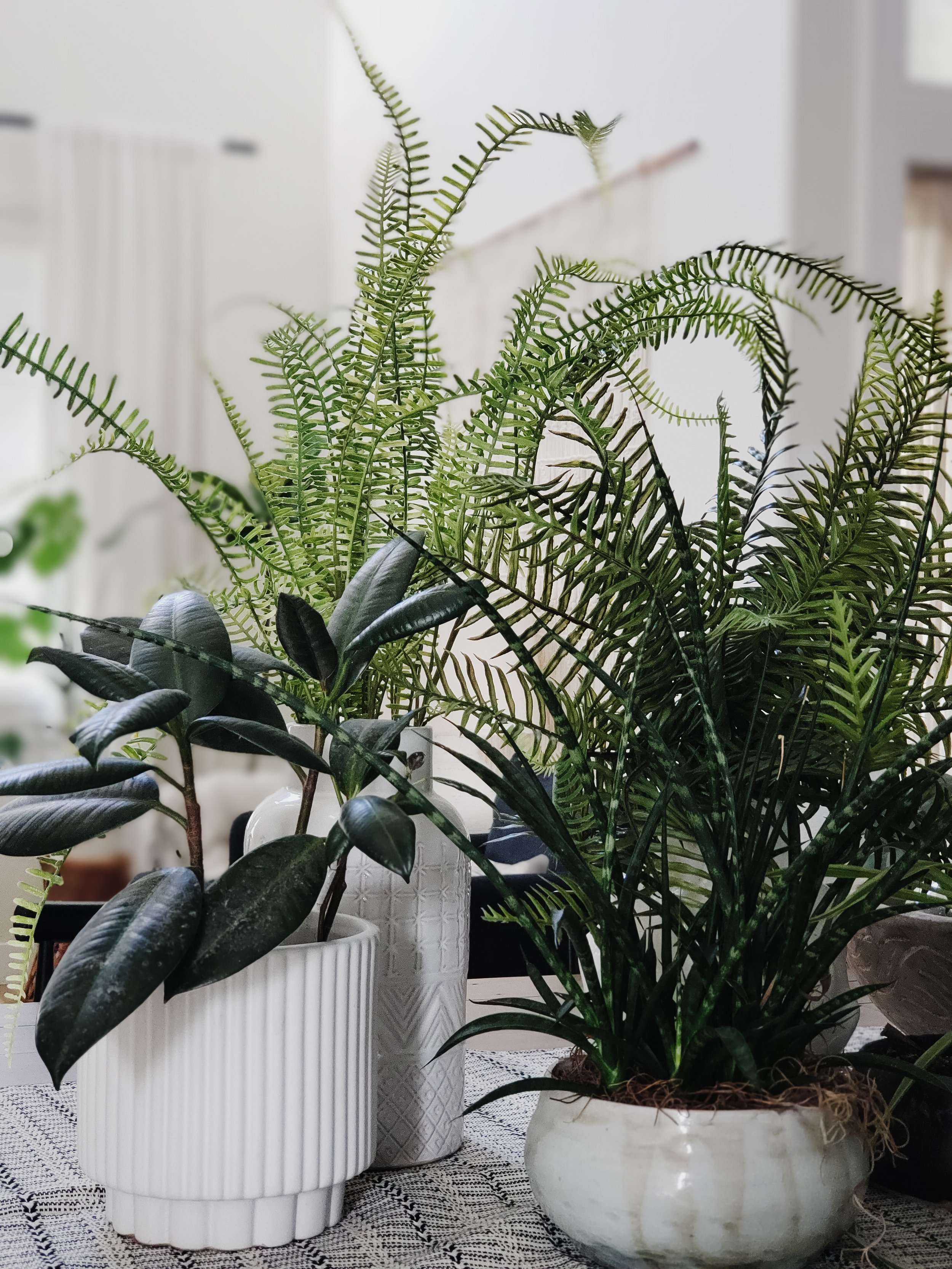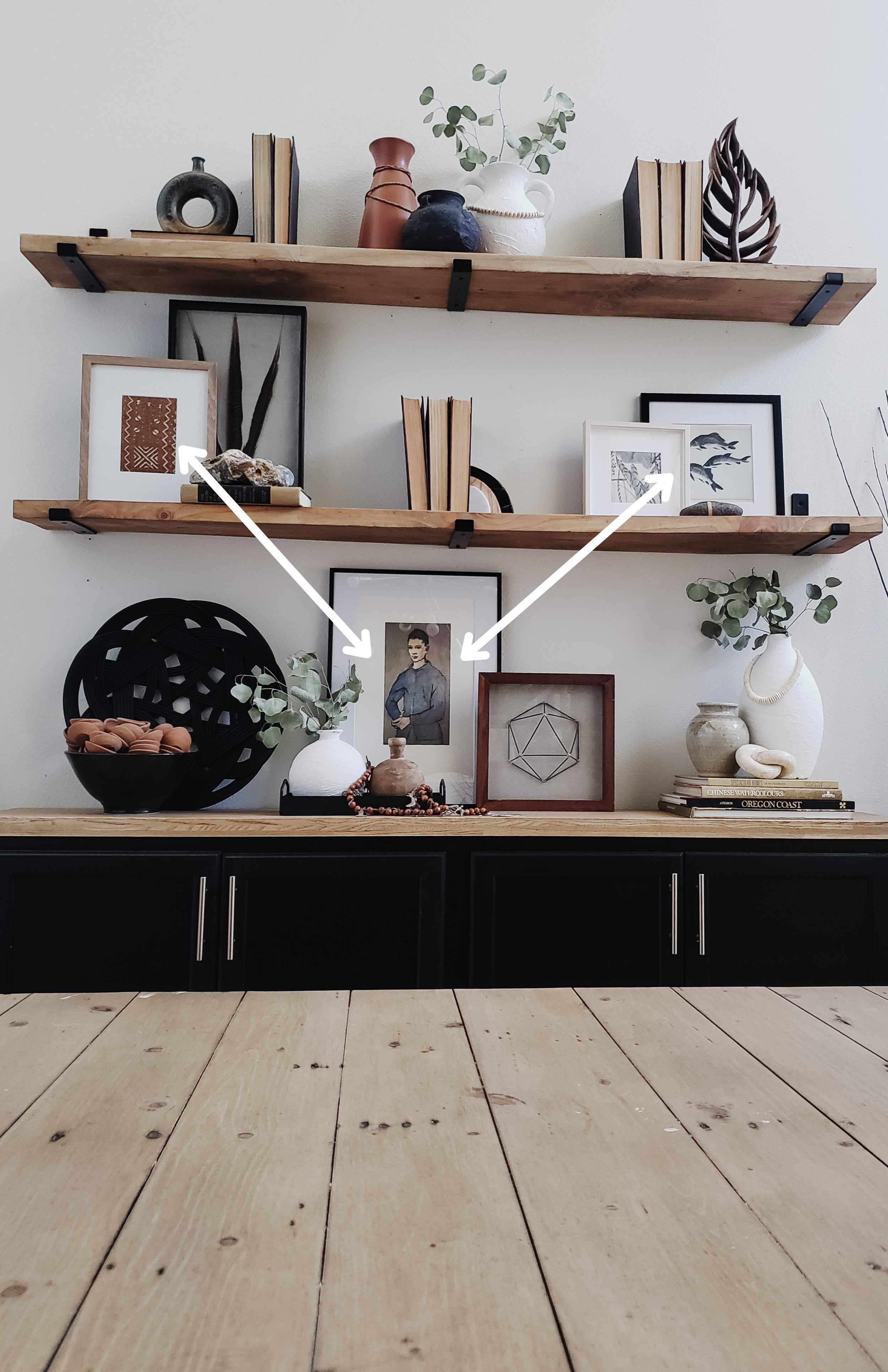The 6 best items for shelf styling (and how to arrange them).
Recently, I’ve had a lot of conversations with clients about how tricky shelf styling can be, so I thought I would write down my own personal process of how I style shelves. First I will go over all my go-to items I use for shelf styling. Then I’ll show you how to go about arranging them in a way that is visually appealing.
Before we get into it, there are a few things to keep in mind…
First of all, it’s good to have a few options from each of the following categories that vary in color, shape and size in order to keep things visually interesting. Secondly, shop your house first before going shopping for new things to style your shelves with. Chances are you already have plenty of items at home that you love and can be put to good use here. When collecting items for your shelves, look for a combination of bold statement pieces and plenty of simpler plain pieces that will balance out the overall look of the shelf.
Lastly, when I style a shelf, I like to take everything off of it before I even start. It gives my mind the ability to assess "what can be" instead of "what was" there. After all, the point of restyling your shelf is to change it up for a fresh look.
Okay, let’s get to those items, shall we?
Artwork, framed photos + signs
I like to start with colorful paintings or framed photos because they take up quite a bit of space and are a solid foundation to build off of. Choose your favorite pieces and make them the focal point that you arrange everything else around. I recommend getting the same color tone of frame to feel more cohesive. I like to layer frames larger in the back and smaller layered a few inches in front of the larger frame. Keep in mind your frame heights and shelf heights to be sure that they will fit.
Vases, bowls + pottery
You’ll want to look for a variety of different shapes, sizes and finishes in your chosen color palette when selecting pottery for your shelves. I typically go with a mix of textured, weathered looking pieces with plenty of patina, and simpler pieces with a smooth, glossy finish. Smaller vases and bowls are perfect for placing on top of a stack of books while larger vases and pitchers make great statement pieces that can simplify an area that has a lot of smaller items.
Books
You don’t have to fill a shelf end-to-end with books. Try grouping a few books together on different shelves with some stacked horizontally and some standing up to create variety. If you have larger coffee table books you want to display or books with beautiful cover designs you can arrange them so their spine is facing out. Or, if you prefer a more neutral/minimal look you can turn the books so the pages face outward.
I recommend collecting antique books with unique covers to add a bit of character. There is nothing better than a good vintage book with unevenly cut and yellowed pages to give you a sense of history. If you’re on a budget, you can hit the dollar store for books and cover them with decorative paper. I have also shopped at the local thrift stores and ripped the covers off to give them a neutral appearance.
Plants + Flowers
The easiest way to revive a dull space is to add an element of nature to your decor. However, if your shelves don’t get a whole lot of sunlight, faux bouquets and plants will be the best way to go. Look for a variety of pots and containers for your plants, and don’t be afraid to think outside of the box here! You can use bowls, pitchers, baskets, ceramic flower frogs, vintage planters—there are a lot more options than you might think.
Sculptures + Figurines
Sculptures and figurines are a great way to add a layer of history or uniqueness to your home. Maybe you have a wood carving from your grandfather, or a piece of depression glass from your grandmother. These kinds of pieces draw the eye and can give a time worn sense of love and warmth to your space. Just like artwork, you’ll want to start with your sculptures and build around them–especially if they're larger.
Simple Large Items
Large items are essential to have for balance. Most of the time I see shelves that have too many small items which can lead to the shelves feeling cluttered. Having a combination of small and large items is the best way to create balance and intention in shelf styling. Our natural tendency is to fill every empty space with all of our trinkets and treasures, but you’ll be surprised at how calming and cohesive your shelves look when you add just one large item to a shelf and allow it to stand on its own.
As you’re styling, take note of any shelves that start to feel "busy" with smaller items. Instead, try adding a basket or a box on the shelf directly above or below it. This will keep the shelves from looking off balance or cluttered. Since they are visually heavier, place a large item on the very bottom shelf that will act as an anchor for the rest of the shelf decor, and then use smaller items as you work your way up.
Now that we’ve covered my favorite items to use for shelf styling, let’s talk about how to arrange them…
The first thing to consider is color.
Before you do anything else, choose a color palette so you can select pieces that fall within that palette to create a cohesive look. Take a look at all the items you’ve gathered from around the house and try to find similarities in color and texture.
Do you have a lot of brass items?
Are you seeing a lot of wood tones amongst your decor?
Is there a specific accent color that you want to use?
Whatever theme you find among your collection of items, take that and run with it. Decide what 2-3 colors you want to emphasize and make sure to add plenty of neutral tones with them. Be sure to spread the colored items throughout each shelf, arranging them differently from one shelf to the next. It should visually bounce back and forth throughout the whole shelf from the top to the bottom.
Next, you’ll want to configure a layout for all your items.
Each shelf should be balanced and vary slightly from the other shelves. By varying the layout of each shelf, you’ll create a look that is visually appealing because of its variety, while still looking cohesive because of the color palette you’ve chosen. Have some shelves with two items (or groupings of items), some with three, and some with just one large item.
Height is also an important factor to consider. You could use all similar sized items on one shelf to create a horizontal line for the eye to follow. Then on the next shelf, place a taller item in the middle with two shorter pieces on either side to create a pyramid formation.
Here are a couple examples of different layouts I used on my shelves at home…
Now that you have an idea of what items to use, and have seen a few different ways to arrange them, let your creative light shine! If you decide that you need some extra help I am just a consultation away!










